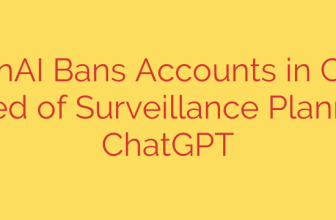
The Future of Your Online Security: Passkeys and the Evolving Threat of Scams in 2025
The digital landscape is in a constant state of flux, with security experts and cybercriminals locked in a perpetual arms race. For years, the password has been the weak link in our digital armor. Now, a more secure alternative is gaining widespread adoption: the passkey. As we look toward 2025, the rise of passkeys promises a significant leap forward in account security. However, this evolution doesn’t mean the end of online threats. Instead, it signals a shift in tactics, forcing us to remain more vigilant than ever.
The Rise of Passkeys: A Passwordless Future is Here
For decades, we’ve relied on complex, hard-to-remember passwords that are frequently stolen in data breaches, reused across multiple sites, and phished by clever criminals. Passkeys are designed to eliminate these vulnerabilities entirely.
So, what exactly is a passkey? Think of it as a unique digital key stored securely on your device, like your smartphone, tablet, or computer. Instead of typing a password, you verify your identity using the same method you use to unlock your device—a fingerprint scan, facial recognition, or a simple PIN.
This method offers transformative security benefits:
- Inherently Phishing-Resistant: A passkey is cryptographically tied to the specific website or app it was created for. This means you cannot be tricked into entering your credential on a fake website. The key simply won’t work, stopping phishing attacks in their tracks.
- Eliminates Weak and Reused Passwords: Since you don’t create or remember a passkey, there’s no risk of choosing a weak one like “Password123” or using the same credential for your bank and your favorite pizza delivery app. Each passkey is unique and incredibly strong by default.
- Server-Side Security: When you use a passkey, the website’s server never stores a secret that can be stolen. In a traditional data breach, hackers steal databases full of password hashes. With passkeys, there is no equivalent “master list” to steal, drastically reducing the fallout from a company getting hacked.
As major players like Apple, Google, and Microsoft continue to integrate passkey technology seamlessly across their ecosystems, we can expect their adoption to accelerate dramatically through 2025, making logins faster, easier, and far more secure.
The Unchanging Reality: Scammers Will Always Adapt
While passkeys solve the password problem, they don’t solve the human problem. Cybercriminals are resourceful. When one door closes, they look for an open window. As it becomes harder to steal credentials directly, scammers will shift their focus from technical exploits to psychological manipulation.
Here are the persistent threats we must anticipate in a world with passkeys:
- Advanced Social Engineering: Criminals will double down on tactics that trick you into taking an action yourself. Instead of a fake login page, you might receive a panicked call or message—a “vishing” (voice phishing) or “smishing” (SMS phishing) attack—claiming your account is compromised and you must immediately approve a security notification or scan a QR code to fix it. In reality, you would be approving the scammer’s login attempt on their device.
- Device-Centric Threats: Since your passkeys live on your devices, the devices themselves become the primary target. Physical theft of your unlocked smartphone could give an attacker access to everything. Malware designed to take control of your device or trick you into authorizing malicious actions will also become a more significant threat.
- Recovery Process Exploitation: Scammers will meticulously study the account recovery processes for major services. They will attempt to gather enough of your personal information through other means to impersonate you and convince a support agent to grant them access to your account, effectively bypassing the passkey.
The core principle remains the same: If a technical barrier is too high, criminals will try to trick the authorized user into opening the gate for them.
Actionable Steps to Stay Secure in 2025 and Beyond
The move to passkeys is overwhelmingly positive, but true security requires a combination of strong technology and informed user behavior. Here is how you can protect yourself in this evolving landscape:
- Embrace Passkeys Promptly: As your favorite services offer the option to switch to a passkey, do it. The sooner you move away from passwords, the smaller your attack surface becomes.
- Treat Your Devices Like Your Keys: Your smartphone is no longer just a communication tool; it is the key to your digital life. Enable a strong screen lock, biometrics, and remote wipe capabilities. Never leave your primary device unattended and unlocked.
- Cultivate a “Trust, but Verify” Mindset: Be inherently skeptical of any unsolicited or urgent communication. A bank or tech company will never call you and demand you approve a login or provide a verification code. If you receive such a request, hang up and contact the company through their official website or app.
- Understand Your Account Recovery Options: Take a few minutes to review and set up the account recovery methods for your most critical accounts (like your email and cloud storage). Ensure your recovery phone number and email address are up-to-date and secure.
- Don’t Abandon Multi-Factor Authentication (MFA): For any account that doesn’t yet support passkeys, using strong, app-based MFA remains an essential security layer that protects you from password-based attacks.
Ultimately, the future of online security is a shared responsibility. While technology like passkeys provides a much stronger foundation, our vigilance and critical thinking remain the final, and most important, line of defense.
Source: https://www.helpnetsecurity.com/2025/10/03/digital-scam-trends-2025/








